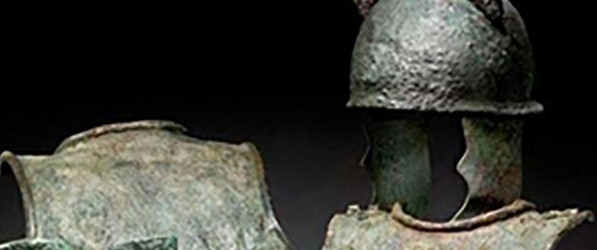
Event Summary
Hilary Becker
Assistant Professor of Classics with the Department of Classical and Near Eastern Studies at Binghamton University
Little is known about the Etruscan army, principally because no Etruscan literary testimony or histories have survived. Etruscan armor from a range of different contexts away from the battlefield offers new opportunities to understand the significance of the Etruscan soldier within social context. This talk begins with a survey of armor discovered in tombs and votive contexts at sites such as Tarquinia, Vetulonia and Monte Falterona, to see just how (and where) Etruscan men defined and articulated their military status. While ancient Greeks tended to prefer giving armor as votive dedications rather than burying it in a tomb, Etruscan practices were almost the inverse.
Etruscans could not only “take their armor with them” to the tomb, but occasionally the tomb itself also reveals further information about the life of the soldier. Indeed, a few elite tombs are decorated with multiple sets of shields. These tombs, modeled after Etruscan houses may reveal where Etruscan armor was stored and even may reveal the responsibilities that elite men may have held in terms of equipping fellow citizens. This theory is especially enlightened by a series of inscribed helmets which reveal who was paying for armor in Etruria. These tombs and armor combined provide vital clues in terms of understanding for the first time how the Etruscan city-state managed its resources and citizens.
Presented by Pittsburgh Society of the Archaeological Institute of America and the Department of Classics of the University of Pittsburgh
Location and Address
125 Frick Fine Arts Building
